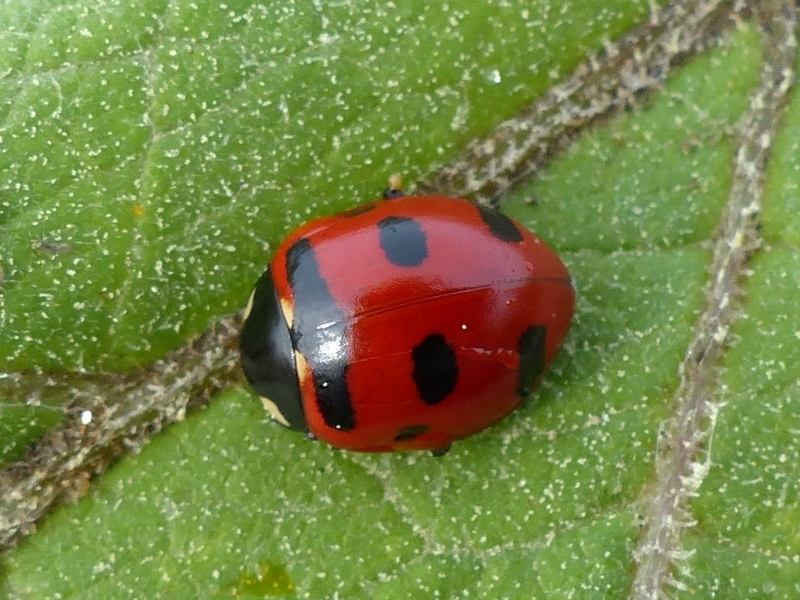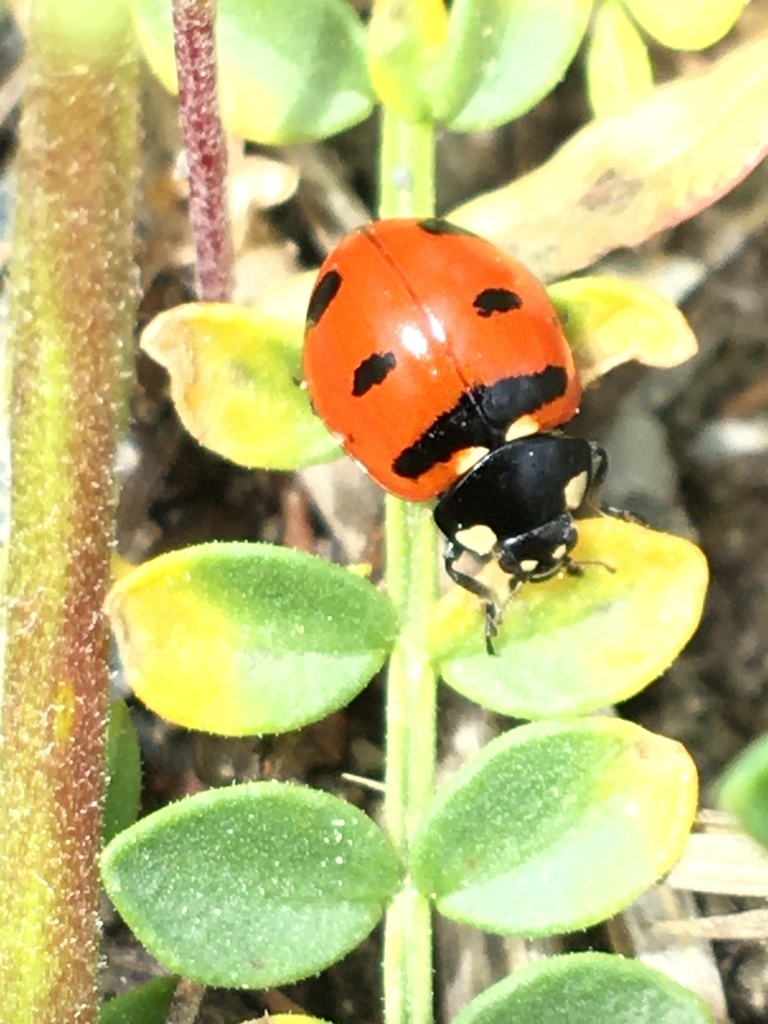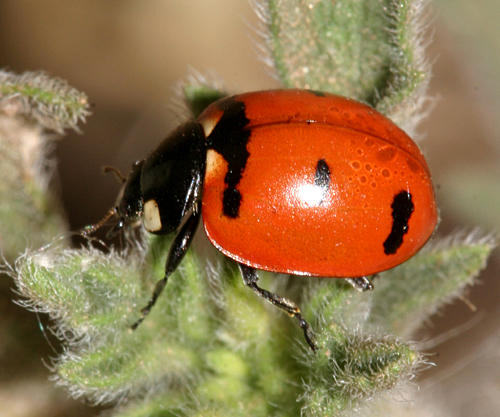
Transverse Lady Beetle By Christian Grenier
The Transverse Lady Beetle is native to North America. This species used to be very common, however it is now rare in the northeastern U.S. and beyond. Its wing covers are red or orange with a black band located behind the pronotum and two elongated black markings farther down. It feeds primarily on aphids and is most active from May to September.
Status
Native
Possibly Extirpated in New York, Nova Scotia, and New Brunswick; Critically Imperiled in Ontario; Apparently Secure in Alberta, Manitoba, Saskatchewan, Yukon, and the Northwest Territories; and Secure in British Columbia. In decline.
Last Seen
1986
Fun Fact
The Transverse Lady Beetle’s distribution used to be extensive in the northern hemisphere, including populations located in Greenland.
Identification
The Transverse Lady Beetle is 5 to 7.8 mm in length.
- Head: Black, with two white spots.
- Pronotum: Black, with a white patch on each of the anterior margins (front sides).
- Elytra: Orange to red in color, with a black band traversing the elytra behind the pronotum. There are two small, white spots above this band, one on each elytron, where the elytra meet. There are two black spots below the black band on each elytron (4 spots total).
- Legs: Black.
- Often confused with: Three-banded Lady Beetle, Mountain Lady Beetle, Hieroglyphic Lady Beetle, Five-spotted Lady Beetle.
Habitat
Habitat generalist, occurring in agricultural crops, gardens, parks, forests (coniferous and deciduous), meadows, prairies, and riparian zones. Historically, the Transverse Lady Beetle was one of the most abundant species found in agricultural crops, particularly alfalfa. Also, this species has historically been found in high populations in early-establishment stages of plantations, favoring early-successional areas and edges. They have been associated with clover, lupine, and willows.
General Range
There are 5 subspecies of the Transverse Lady Beetle, 4 of which occur in the Western Hemisphere. Only one subspecies, Coccinella transversoguttata richardsoni, occurs north of Mexico and is widely distributed across the United States and Canada.
Food
Aphids, likely other small, soft-bodied insects, scale insects, mites, insect eggs, pollen, and nectar.
Life History
Development from egg to adult takes from 25 to 40 days, depending on food, temperature, and photoperiod. Females seem to lay an average of 267 eggs over the course of 14 days, based on a laboratory study. It is likely that Transverse Lady Beetles have 2 to 3 generations per year in northern climates.
More Information
You can find more information about Transverse Lady Beetles using the following links:
Vermont Distribution
Visit the iNaturalist Observation Map and Occurrence Records to find out where Transverse Lady Beetles have been seen in Vermont.








